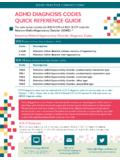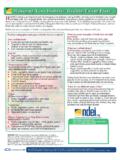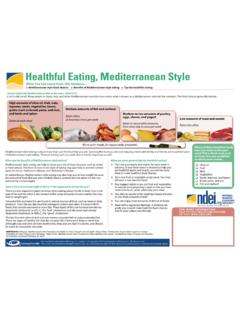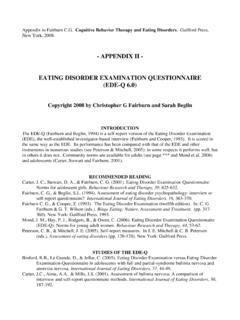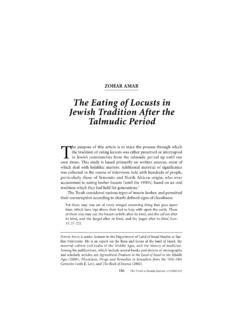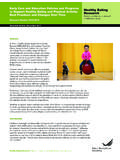Transcription of Binge Eating Disorder Screener-7 (BEDS-7) - …
1 Binge Eating Disorder Screener-7 ( beds -7)For use with RESOURCE KITA guide to using the Binge Eating Disorder Screener-7 ( beds -7)This patient-reported screener is designed to help you quickly and simply screen adults whom you suspect may have Binge Eating Disorder ( ).USING THE beds -7 IS SIMPLE:If the patient answers YES to question 1, continue on to questions 2 through the patient answers NO to question 1, there is no reason to proceed with the remainder of the screener. If the patient answers YES to question 2 AND checks one of the shaded boxes for all questions 3 through 7, follow-up discussion of the patient s Eating behaviors and his or her feelings about those behaviors should be considered. Evaluate the patient based upon the complete DSM-5 diagnostic criteria for tool was developed by Shire US Inc and is intended for screening use only. It should not be used as a diagnostic tool.
2 STEP 1:QUESTION 1 STEP 2:QUESTIONS 2-7 STEP 3 The following questions ask about your Eating patterns and behaviors within the last 3 months. For each question, choose the answer that best applies to During the last 3 months, did you have any episodes of excessive overeating ( , Eating signi cantly more than what most people would eat in a similar period of time)?Ye sNoNOTE: IF YOU ANSWERED NO TO QUESTION 1, YOU MAY STOP. THE REMAINING QUESTIONS DO NOT APPLY TO Do you feel distressed about your episodes of excessive overeating?Ye sNoWithin the past 3 or RarelySometimesOftenAlways3. During your episodes of excessive overeating, how often did you feel like you had no control over your Eating ( , not being able to stop Eating , feel compelled to eat, or going back and forth for more food)? 4. During your episodes of excessive overeating, how often did you continue Eating even though you were not hungry?
3 5. During your episodes of excessive overeating, how often were you embarrassed by how much you ate?6. During your episodes of excessive overeating, how often did you feel disgusted with yourself or guilty afterward?7 . During the last 3 months, how often did you make yourself vomit as a means to control your weight or shape? This information is brought to you by Shire US 2014 Shire US Inc., Wayne, PA 19087 S04171 12/14 Reference: Data on fi le; SPD489-159; Shire US is a registered trademark of the American Psychiatric Association. This information is brought to you by Shire US 2014 Shire US Inc., Wayne, PA 19087 S04171 12/14 FPO
